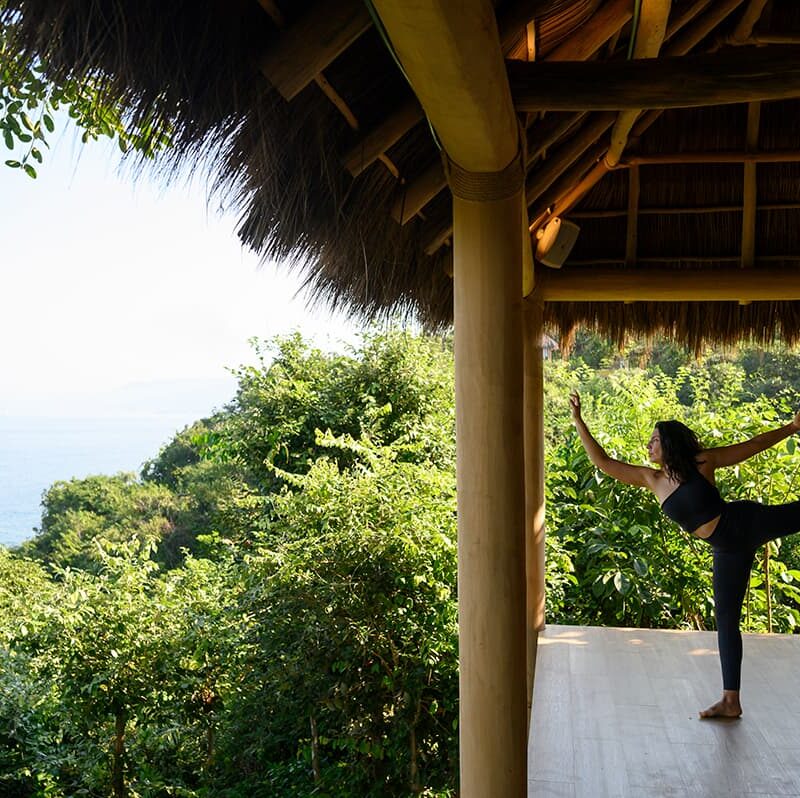I never thought it was possible, but I recently paddled out on a surfboard twice in one day. On purpose. Happily, even, despite a gargle or two of salty ocean water flushing my sinus cavity.
Xinalani's All Inclusive Packages
Since I generally opt to stay dry and warm on land, the wellspring of my atypical adventurous mood resulted from a choice that was difficult but necessary: to retreat into quietude, contemplation, nature, and Self.
Beautiful Eco Chic Rooms and Beach Casitas
I took an immersive week turning away from screens, apps, obligations, and even my sons to turn towards me. It was a complicated process to get me to the point of even boarding my departing flight. I invested countless hours organizing schedules for two active kids, created emergency and medical documents for the grandparents, and spent days prior shopping for their meals in my absence. I felt skeptical my efforts were going to be worth my taxing level of output.
My life the two years prior had gotten particularly and uncomfortably messy, where the only certainty was change. The suchness of life had escalated, prompting me to embrace a radically nurturing choice:
RETREAT
A state of retreat may look like a day offline, tending to yourself over others. It may look like a night away with a trusted friend, baring your soul over a fireside cup of tea. Or, it may take the form of extended time away, immersed in quietude. “Even a short period of retreat is a benevolent rest,” as Jack Kornfield calls it. It’s “a stepping outside of busy daily routines and our ordinary identity. Released from the tyranny of time, we are invited into the reality of the present, to see the mystery of life anew.”
The practice of retreating is essential in eastern philosophies, like Buddhism.
In retreat, we rediscover our True Self, our inner light
Day by day, my mind quieted, my heart softened, and my body felt lighter. I could finally pause to appreciate the endless blue ocean, the sound of crashing waves, and the warm sun on my skin.
Admittedly, intrusive thoughts persisted at times. I grappled with expectations for my children, global suffering, aging parents, and even my right to deserve self-care.
I knew I wanted to honor every feeling with compassion, but first I had to embody a grounded sense of quiet. And during it all, a peaceful strength reemerged, and I glimpsed the dance of life: its ever-changing beauty, its emptiness and fullness, its need for compassion, courage, and empathy.
After a week of rest, play, nourishment, and soul reconnection, the retreat ended, leaving me inspired, refreshed, and renewed. I again felt a deep appreciation for the natural growth that comes from mindfulness and presence. I was ready to go home and continue with a strong, embodied, and peaceful heart.
Take regular retreats—long ones, short ones, daily mini ones. Take a minute of silence, or sip your tea without interruption. Walk under the trees without your phone. Sit silently on the sand. Tend to your busy self with compassion and boldly honor your spirit first so you can help others. Feed your heart and renew your spirit.
About the Author

Yin & Reiki magic flow through Nicole’s transformative teachings. As a highly qualified RYT® 500 with 1000+ hours of training, she empowers others to find joy and purpose through yoga and Reiki. A former college professor, Nicole now guides individuals towards purposeful living and inner peace through mindfulness practices. She credits her mentors and teachers, including Joe Barnett, senior student of Yin founder Paul Grilley. Nicole is the Lead Assistant in Joe Barnett's Yin Yoga Level trainings and has created her own extensive Yin Yoga training program for future teachers. She is grateful to have trained with Restorative Yoga pioneer Judith-Hanson Lasater in both Restorative Yoga and Non-Violent Communication. Her Reiki lineage runs deep and includes master teachers such as Diane Stiene. Join Nicole on a journey of self-discovery, healing, and cherished balance and calm in this restful sanctuary.

























